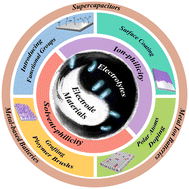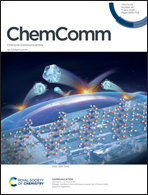Electrolyte-philicity of electrode materials
Abstract
The electrochemical interfacial interaction of electrode materials with liquid electrolytes in electrochemical energy storage systems including supercapacitors, metal ion batteries, and metal-based batteries have become a research hotspot and play a decisive role in electrochemical energy storage in terms of charging and discharging reaction principles of the electrode materials. However, there is still a long way from maturity due to the challenges related to the unsatisfactory electrolyte-philicity of electrode materials. In the last 20 years, several studies have been directed at discovering strategies to improve the electrolyte-philicity of electrode materials, optimizing the electrochemical interfacial interaction of the electrode materials with liquid electrolytes and exploring the relationship between electrolyte-philicity and electrochemical energy storage performance in the charging and discharging processes of the electrode materials. Unfortunately, the systematic and in-depth understanding of electrolyte-philicity of electrode materials has not been grasped in electrochemical energy storage systems. In this review, we highlight the fundamental scientific understanding of electrolyte-philicity of electrode materials and the relationship among electrolyte-philicity and electrochemical energy storage performance of electrode materials. The definition of electrolyte-philicity of electrode materials is first proposed based on the interaction between the electrode material and electrolyte ions as the essence of electrochemical energy storage of the electrode materials. More important, how the electrolyte-philicity of electrode materials optimizes the electrochemical energy storage performance of the electrode materials has been expounded from the rapid and effective contact of the electrode materials with electrolyte ions under uncharged state to electrochemical interfacial interaction between the electrode materials and electrolytes under the charged state. Then, the fundamental physical and chemical interactions so that the electrode materials may be electrolyte-philic are summarized, and the mechanisms of improving the electrolyte-philicity of electrode materials by surface modification are illustrated based on those interactions. Finally, the future perspectives for important areas of electrolyte-philicity of electrode materials are presented.

- This article is part of the themed collection: ChemComm Most Popular 2023 Articles


 Please wait while we load your content...
Please wait while we load your content...